The Trees of Deep Time
Exploring the mystery of an old-growth redwood forest with trees over a thousand years old.
You’re at Mother E, a free newsletter about our connections to nature and other species in a climate-changing world. If you missed the last edition, it’s here: A Close Link—Food and Planetary Health
If this newsletter gets shortened by an email program or the images don’t show, you can read it on the website here. To get Mother E coming to your email box every other Sunday, sign up below.
I HAD NEVER SEEN A TRAIL SO BUMPY WITH ROOTS. I was climbing up a ridge to see the Cathedral of Trees in Prairie Creek Redwoods State Park recently, and lattices of roots crisscrossed the weathered path.
Prairie Creek is a 14,000-acre park sanctuary for giant, old-growth coastal redwoods (Sequoia sempervirens) on California’s far northern coast. I planned our vacation around seeing ancient trees that can grow up to 2,500 years old. I wanted to experience what these natural, uncut redwood forests looked and felt like compared to the younger, logged forests growing near my home. With more than 95% of coastal old-growth redwoods cut down by logging, it felt like a bucket-list thing to do.
Roots on the ground and in my face
The trail wove under a soaring canopy a hundred feet high and around the house-tall root balls of giant trees fallen over decades or centuries ago. The roots of living trees stretched across the ground. It felt wrong to step on these living roots, but the jumble of growth on either side of the path offered no way but forward.
Redwoods, surprisingly, have shallow root systems, only 6-12 feet deep, and no taproot. A mass of roots is needed to support a tree 300 feet tall. These roots spread 50-80 feet wide and intertwine with other redwood root systems. They can support and stabilize their massive bulk through a cooperative holding on and holding together. Redwoods need friends to thrive.
Some downed trees had weathered root balls 15 feet tall carved by rain and time. They looked like dragons, griffins, or flames turned into wood. I fantasized about mythical creatures around each bend of the trail.
The fallen giant trees served as “nurse logs,” supporting ferns, huckleberry plants, mosses, and even other redwood trees growing from their decaying wood. Nature’s lesson is that nothing goes to waste, a concept we need to adopt in the human world.
A friend of mine claims, “You can’t throw something away. Where is away?” It all still stays on Earth in some form. For this ancient forest, a fallen tree’s “away-disposal” was right there, continuing to support new life.
The tallest of all living things
Coastal redwoods are listed as the tallest trees on Earth. The king of these is the Hyperion tree in nearby Redwoods National and State Park. It’s almost 380 feet tall—75 feet taller than the Statue of Liberty. Trees like this are so high that the tops aren’t visible except by looking down from above.
Walking under a canopy of titan trees is an experience unlike any other. The high ceiling and soaring open space feel like a living cathedral. The sunlight has a colored cast after sifting through thousands of lacy green branches. The sound is hushed by the layers of forest duff and the many soft growing surfaces. Organisms pile up upon each other here in a rich tapestry of interconnected aliveness. The plant kingdom dominates this place, from tiny mosses to towering redwood trees.
I found my jaw dropping at the imposing size of these old redwoods. I used a measuring app on my phone to check the base of one tree. It was 24.3 feet wide. Its bulging roots fastened to the ground like gray elephant feet, and its layered bark had black patches of centuries-old contact with fire.
Some big trees had their central heartwood partly burned out, leaving blackened, hollowed spaces big enough to fit several people. When I stepped inside one fire-hollowed tree, its thick outer sapwood and bark cut off all sounds of the forest, leaving only a cloistered silence. A hollowed redwood is a hallowed place.
Trees alive since Roman times
I notice when people walk by giant redwoods they often want to touch them. The bark is relatively soft and has a shaggy friendliness. When I place my hand on these massive trees, I reflect on all the history they’ve experienced. Patting them is touching a tree alive since the Visigoths ruled in Europe 1,500 years ago or when the Roman Empire ended in AD 476.
I wonder what these ancient trees have learned about adaptation through their millennium-long lives. Resiliency is built into any species that’s been around for tens of millions of years.
New redwood trees can start in four different ways: through seeds, by sprouting from the roots or stumps, and through cuttings. This versatility means that if a tree is cut down, the roots or stump can still generate new life.
And what can we learn from the redwoods to help our species survive? Maybe it’s all about going back to our roots, and creating the intertwining connections that provide mutual support. May these vital trees show us how to take the long view, weaving both growth and decline into a seamless circle that supports life on Earth.
Robin Applegarth
If you go:
Be sure to stop by the new Redwood Sky Walk at the Sequoia Park Zoo in Eureka, California. It’s an easy quarter mile aerial walk that takes you 100 feet above the forest floor and under the canopy of tall, old-growth redwood trees.
I love to hear from readers! Have you enjoyed the company of a wise old tree?You can comment at the button above, reach me privately by responding to this email, or contact me on Twitter @RobinApplegarth.
Not subscribed yet? Mother E is a free newsletter about our connections to other species in a climate-changing world. Sign up below to have it delivered to your email box every other Sunday.

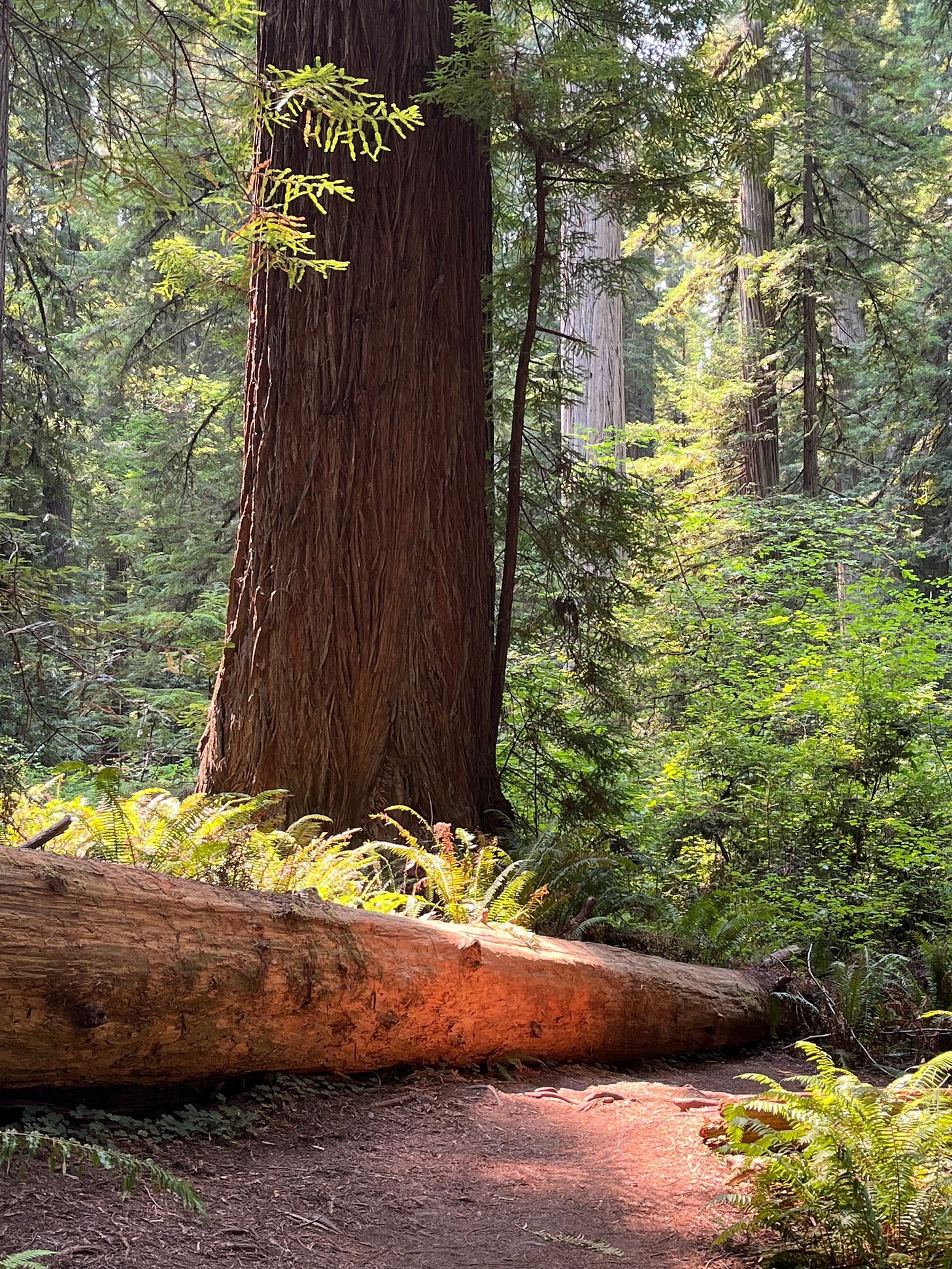
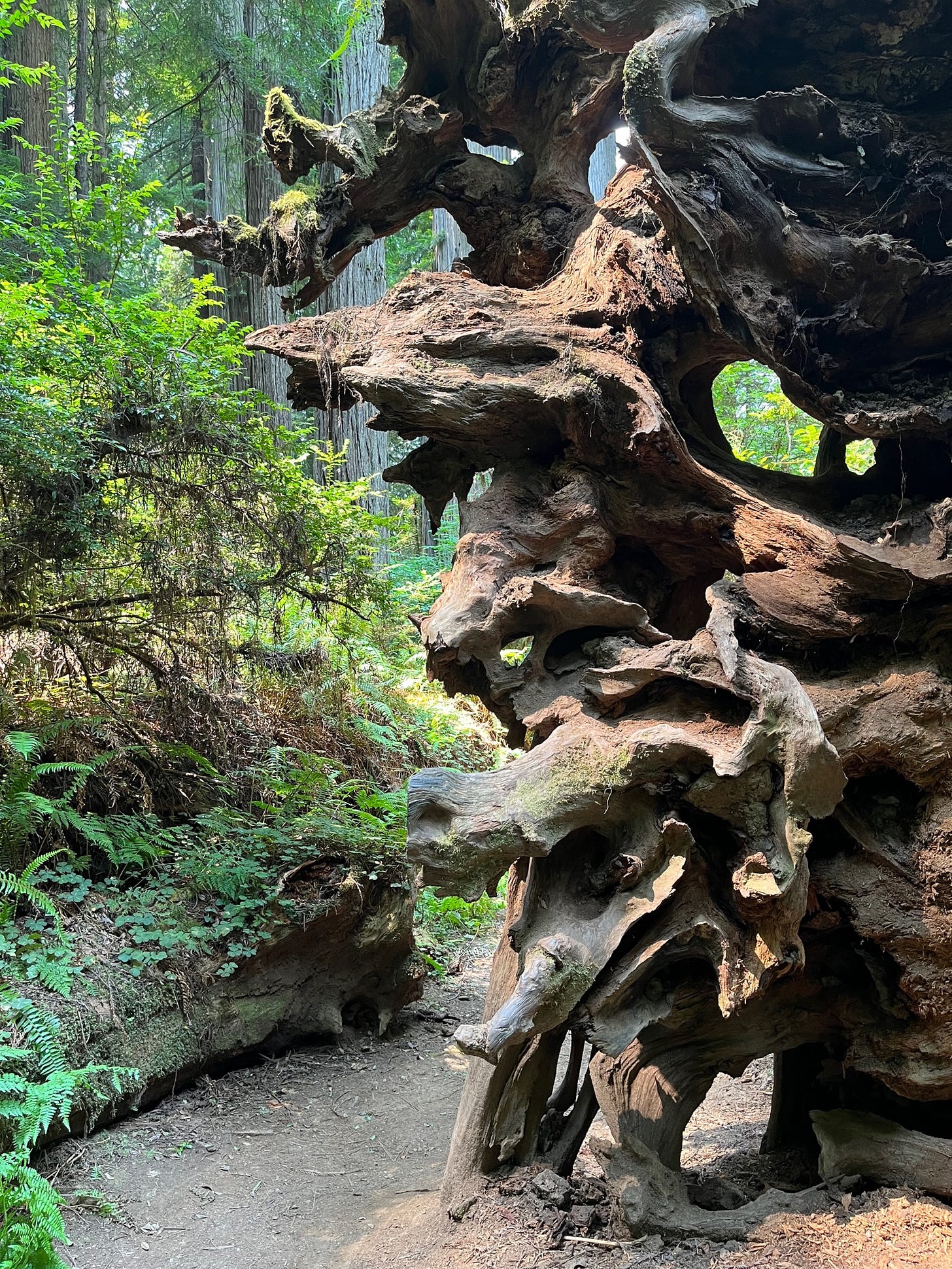
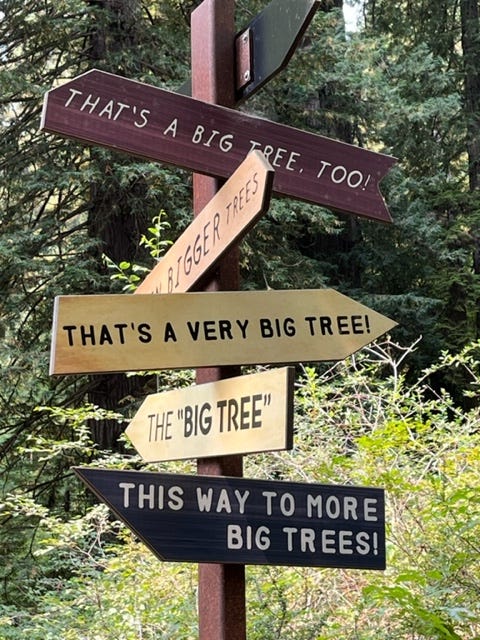
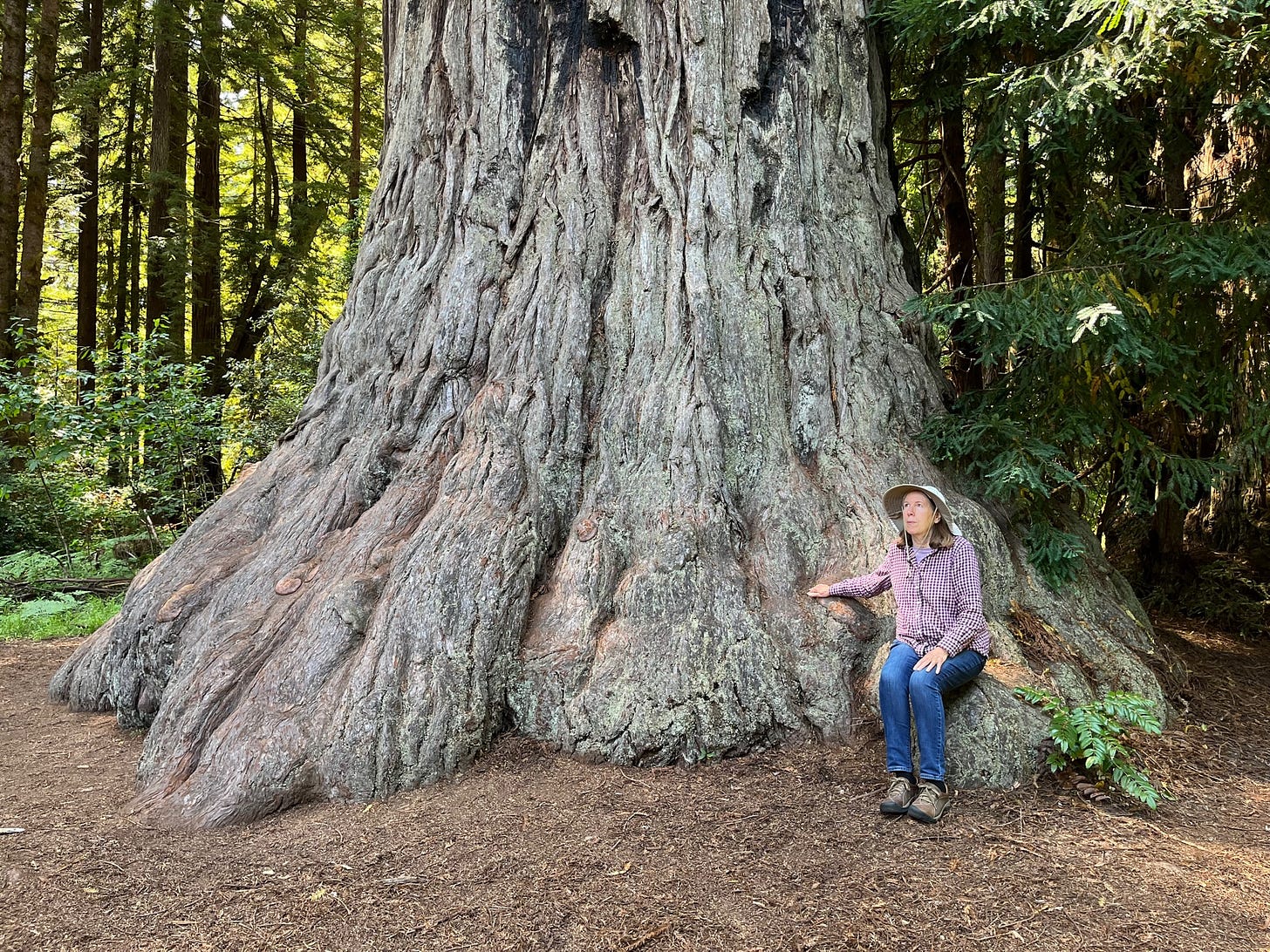
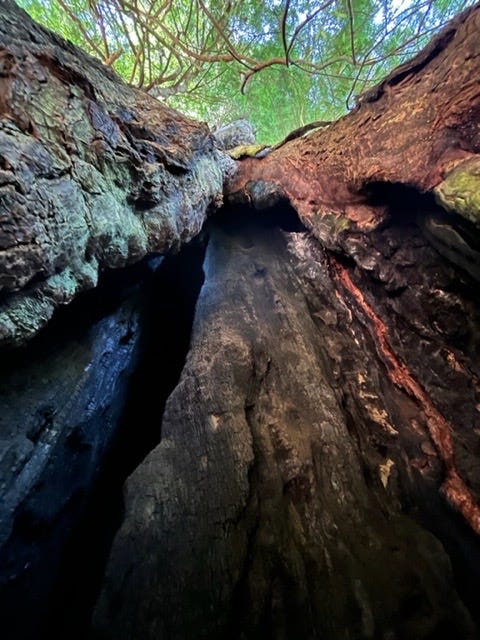
Lovely! We all do need each other for our survival and thrival as you beautifully indicated in sharing your experience! I felt I was there too through your exquisite photos and story ❤️🙏🏼
Prairie Creek is amazing. I lived five years in Humboldt and explored, hiked a bunch. Humboldt feels older and wilder than the South Coast. And Prairie Creek was one of my favorite places. Great fun blog!